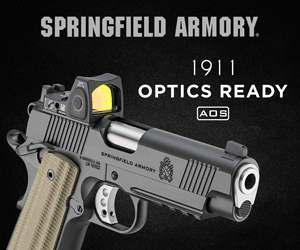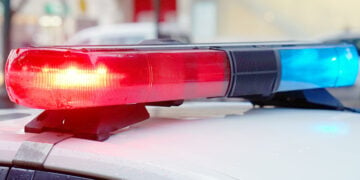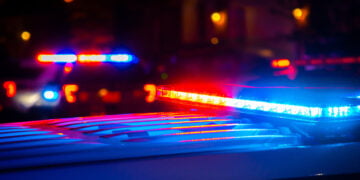There is an entire niche training industry in the firearms world. But the reality remains that most people will receive their only firearms education through people they know. If you are a serious shooter, you very well may end up teaching a lot of new shooters throughout your life. I think that doing so should be part of our ethos as shooters. We want to spread this craft to keep people safe and to protect our constitutional rights. Therefore, what are some considerations for the shooter who is not a dedicated instructor to keep in mind when teaching new people who have never even fired a gun?
Safety is Paramount
The first and absolutely most pressing concern is safety. Strict protocol to safety standards is a must any time we handle firearms. But the situation becomes even more complicated when dealing with a novice shooter. If you have a new learner at the range for the first time, my advice is to keep strict control of the firearm at all times. Place it in the hand of the student only when they are on the line and prepared to shoot.
Supervise All Gun Handling
All gun handling should be done only under your direct supervision, with the gun safely pointed downrange. When the live fire is ready to begin, you can hand the gun directly to the student with it pointed safely downrange the entire time. The administrative loading of the gun, as performed by the student, needs to be carefully monitored. That way, you can take control of the gun if you must, should something unsafe happen.
Where to Stand
When coaching a new shooter, the instructor needs to stand on the dominant side and slightly behind of the learner. If the student is right-handed, you need to be on their right side. This position allows you to take control of the gun immediately. It is common for a novice to point the gun in unsafe directions. For example, turning around while on the line and flagging people to their rear. By standing on the gun side, you can intercept the gun if the student makes this unsafe move.
Get Up Close and Personal!
When teaching a new shooter, you are in a social situation in which normal personal space does not apply. I believe in being all but pressed right up to the individual. I can take control of the gun immediately if any unsafe gun handling evolves. Should the student turn with the gun towards the rear, you can simply take control of their arm and gun hand to stop this action. Be sure to keep your own hands clear of the muzzle.
Start with One Round
When setting up a first-time shooter to take their first shot, I am an advocate of only loading one round in the gun. Following the very first round ever fired, many new shooters will have a startled reaction. The recoil from a handgun, combined with the noise and flash, can lead to an unsafe reaction. If there is only a single round in the gun, then an unsafe reaction will not lead to a dangerous situation. Once you do this several times and verify that the student is reacting well to the discharge, you can load more than a single round in the gun.
What to Focus On
Obviously, a first-time shooter will not advance significantly in skill within a single and first range session. But the first, and most difficult, hurdle for them will be overcome. When teaching first-timers, I have concluded that safe handling is the primary topic to be covered. Beyond this, however, focus on teaching a good grip on the handgun and coach them through making a good trigger press.
Obviously, the shooting will be strictly slow-fire for a first-time shooter. For each shot, talk them through a good grip and a smooth trigger press directly to the rear. Only a brief discussion of sight alignment and sight picture is needed, as the concept is not that complicated for most. However, before the shooting begins, determine the eye dominance of the student so that you can ensure the gun is aligned with the correct eye.
One very common issue that will almost inevitably arise with a new shooter is the flinch. I have worked with many brand new shooters that put their first few shots right where they need to be, and after several rounds, their hits go all over the place. This is usually because they begin to flinch in reaction to the shot sub-consciously. The flinch is a very difficult phenomenon to overcome, and even advanced shooters train to mitigate the issue. One way in which you can assist a new student is to have them do some dry fire before continuing with live fire. Have them do several dry fire repetitions while focusing on the fundamentals of grip and trigger press. After seeing several good reps, re-introduce the live fire.
Use Appropriate Equipment
When teaching a first-time shooter, it is imperative that you use the appropriate gear. Recoil is an enormous turnoff for a new shooter. If teaching someone to use a handgun for the first time, something chambered in 22 rimfire is great, if you have it. But, if using service caliber guns, a full-size pistol in 9mm is preferable to harder recoiling rounds. If teaching someone to shoot a long gun, a 22 rimfire is a great option, or perhaps a lever-action rifle chambered in a light-recoiling pistol cartridge.
I have been shocked on many occasions to see guys working with someone who is obviously a brand new shooter. And they hand them a 12 gauge shotgun, or a handgun chambered in 44 magnum, or some other outrageous thing. This is a great way to turn somebody off so that they will never fire a gun again. This does not help to foster our shooting heritage, and it does not help to win over Second Amendment supporters. A first trip to the range should serve to introduce the learner to safety and the inherent fun of shooting.
We should all work towards fostering the heritage of shooting with new people, but we must do it safely and appropriately. Give these suggestions some thought before your next range trip with a new shooter.









